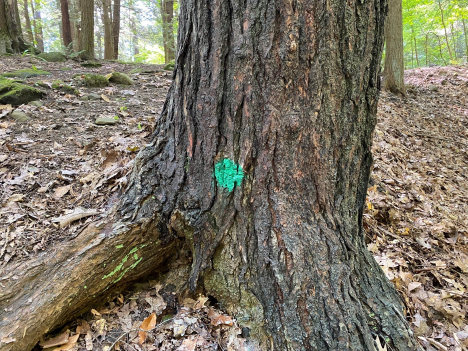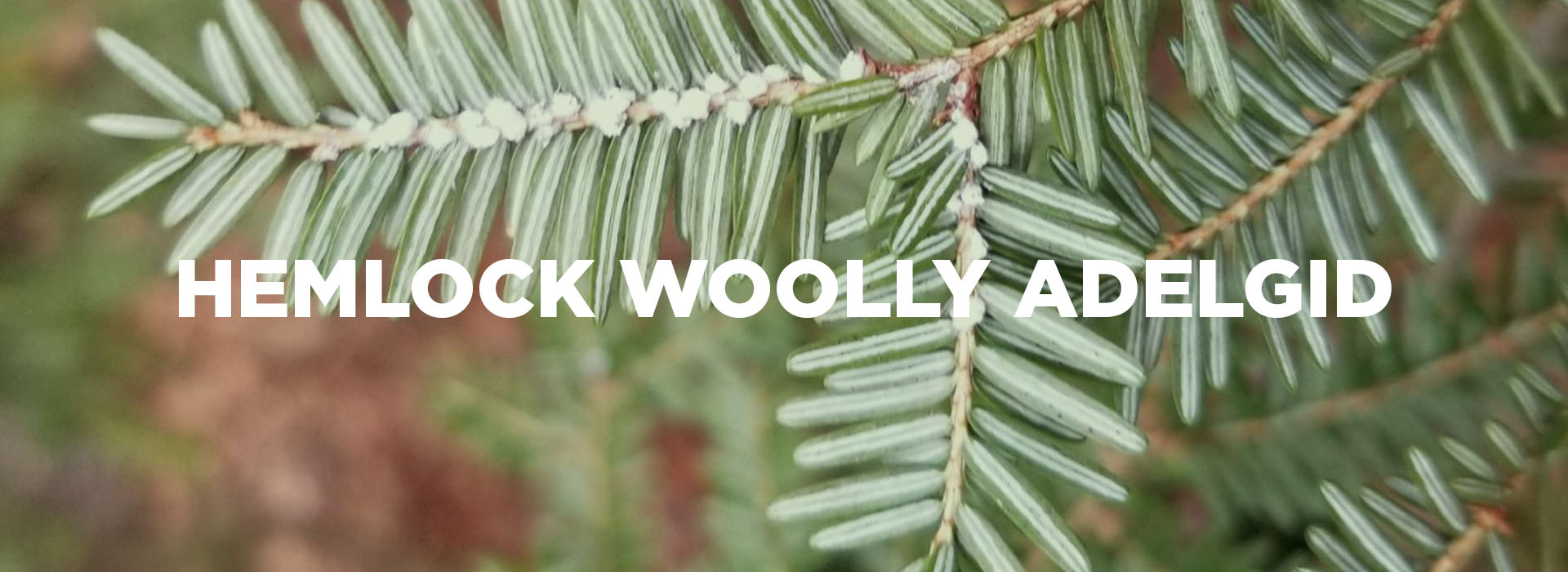Hemlock Woolly Adelgid in Mill Creek MetroParks
Hemlock Woolly Adelgid (HWA) is an aphid-like insect, native to Asia that feeds on the sap of specific hemlock and spruce species. First introduced to the Eastern U.S. in 1951 (Richmond, VA), the pest has slowly spread across the Eastern Seaboard from Georgia to Maine and as far west as Michigan (20 states) – reaching Ohio in 2012 (Meigs County). Since its discovery in Ohio, the HWA has been documented in 14 counties, with the most recent discovery being made in Mill Creek Park (Mahoning County).
In November of 2020, the Hemlock Woolly Adelgid was discovered by The Nature Conservancy during a routine hike along the Slippery Rock Trail in northern Mill Creek Park. This discovery triggered an immediate response from Mill Creek MetroParks, the Ohio Department of Agriculture, and the Ohio Division of Forestry to confirm the findings and carry out more extensive survey efforts. Once the distribution of this pest is better defined within Mill Creek Park, the MetroParks and our partners will begin the planning and implementation of a management plan that will include actions such as insecticide treatments and continued survey efforts. Due to the persistent nature of this invasive pest a long-term, phased management approach will be necessary, likely spanning several years.
To aid in the documentation of this pest, Mill Creek MetroParks encourages any park users to report possible sightings to Nick Derico, Natural Resources Steward at 330.702.3000 x 136 or nderico@millcreekmetroparks.org (email preferred).
2022 Update
 In continued partnership with the Nature Conservancy (TNC), treatments to manage the Hemlock Woolly Adelgid (HWA) are currently ongoing in Mill Creek Park, specifically in the areas surrounding the Slippery Rock Trail, Artists’ Trail, East Cohasset Trail, Bears Den Cabin, and Cascade Run. These treatments ensure that the Eastern Hemlock (Tsuga canadensis) will remain a dominant species in our forested ecosystems for generations to come. Once an individual tree receives treatment, it will be monitored over the course of several years to assess the success of the treatment and the overall health of the tree. To accomplish this, each tree will receive a small green dot of paint which indicates that it has received treatment.
In continued partnership with the Nature Conservancy (TNC), treatments to manage the Hemlock Woolly Adelgid (HWA) are currently ongoing in Mill Creek Park, specifically in the areas surrounding the Slippery Rock Trail, Artists’ Trail, East Cohasset Trail, Bears Den Cabin, and Cascade Run. These treatments ensure that the Eastern Hemlock (Tsuga canadensis) will remain a dominant species in our forested ecosystems for generations to come. Once an individual tree receives treatment, it will be monitored over the course of several years to assess the success of the treatment and the overall health of the tree. To accomplish this, each tree will receive a small green dot of paint which indicates that it has received treatment.
Additional Resources
For more information on Hemlock Woolly Adelgid, visit https://agri.ohio.gov/wps/portal/gov/oda/divisions/plant-health/invasive-pests/hwa

